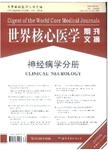中国中风患者情绪失控的诊断、发病率及临床表现和影像学的相关性研究
Emotional incontinence in Chinese stroke patients: Diagnosis, frequency, and clinical and radiological correlates作者机构:Department of Psychiatry Shatin Hospital Shatin N. T. Hong Kong Dr.
出 版 物:《世界核心医学期刊文摘(神经病学分册)》 (Digest of the World Core Medical Journals:Clinical Neurology)
年 卷 期:2005年第1卷第1期
页 面:14-14页
学科分类:1002[医学-临床医学] 100204[医学-神经病学] 10[医学]
主 题:中风患者 影像学 情绪失控 中风评分 脑中风 郁症 中国香港地区 医院病房 大样本研究 精神科医师
摘 要:Of the few studies published on poststroke emotional incontinence(PSEI), none has investigated a consecutive stroke cohort in a Chinese patient population. The objective of this study was to examine the frequency and the clinical and radiological correlates of PSEI in Chinese stroke patients in Hong Kong, Three months after their admission, a psychiatrist interviewed 127 stroke patients who were consecutively admitted to the medical wards of a university affiliated regional hospital. The presence of PSEI was defined according to both Kim’ s and House’ s criteria. The frequency of PSEI was 17.9% according to Kim’ s criteria and 6.3 % according to House’ s criteria. The kappa between the two sets of criteria was 0.34. Univariate analysis found that PSEI was associated with a younger age, previous history of depression, a higher National Institute of Health Stroke Scale total score and cortical infarcts. Multivariate logistic regression suggested that past history of depression and cortical infarcts were independent predictors for PSEI. In conclusion, PSEI is relatively common among Chinese stroke survivors. A previous history of depression or cortical lesions were independent predictors for PSEI. There is a need for a revision of the diagnostic criteria for PSEI.



